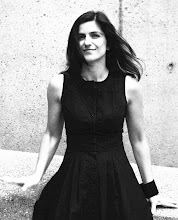geography=war, 1991





by alfredo jaar, at mca
* FYI:
Geography = War, 1991
Duratrans, light boxes, fifty-five-gallon metal barrels, and water
Dimensions variable
Jaar’s photographic installation refers to an incident that took place in Koko, Nigeria in 1987 and 1988. During that period, five Italian tankers carrying toxic waste arrived in this port city. A farmer, not aware of the materials contained within and the risks they posed, agreed to store the barrels for $100 a month. Although marked with the international toxic hazard symbol of a skull and crossbones, some of the barrels were emptied by residents of the area; others exploded in the heat, their contents seeping into the water system. As a result, people suffered from chemical burns and contaminated food.
Jaar’s work consists of fifty-five-gallon barrels filled with water, over which are suspended light boxes with photographs of the citizens of Koko. The photographs are seen by viewing the reflections in the water-filled barrels. As the viewer peers into the barrels to see the photographs, he or she also sees his or her own reflection. Jaar seems to be asking each of us to confront our own role in societal injustices. The light boxes are like those used for advertisements in hotels, train stations, and airports. Usually, such displays advertise goods to be consumed; here, they present people living in the direst circumstances. Jaar deploys such reversals to make the viewer aware of his or her own position as a citizen of the world. Jaar has stated:
Africa and Latin America are rapidly becoming the dumping grounds for millions of tons of toxic industrial waste from the so-called “developed” countries. . . . Some of the world’s poorest nations have been targeted as potential dumpsites for US and European waste. . . Forced to choose between poison and poverty, some are choosing the poison, which will bring them “incomes” sometimes larger than their annual gross national product. . . . My dilemma as an artist is how to make art out of information that most of us would rather ignore.



5 Comments:
poly exypno
kai endiaferousa stash gia thn texnh
gt
interesting, but without the "manifest-text" you cannot understand the installation.
the beautiful installation can intrigue you to search for the meaning. it would not be so good if it was too literal, would it?
I prefer the installations that you can understand the meaning without external help/manifests.
This text close to the installation make it too literal.. or not?
you might be right.
the way i am thinking about this specific installation is that:
1. i like it a lot regardless the reason it is made for
2. the fact that he was inspired/ thinking sthg important makes me appreciate it more.
samll note: next to the installation there was just part of this text put by the museum
Post a Comment
<< Home